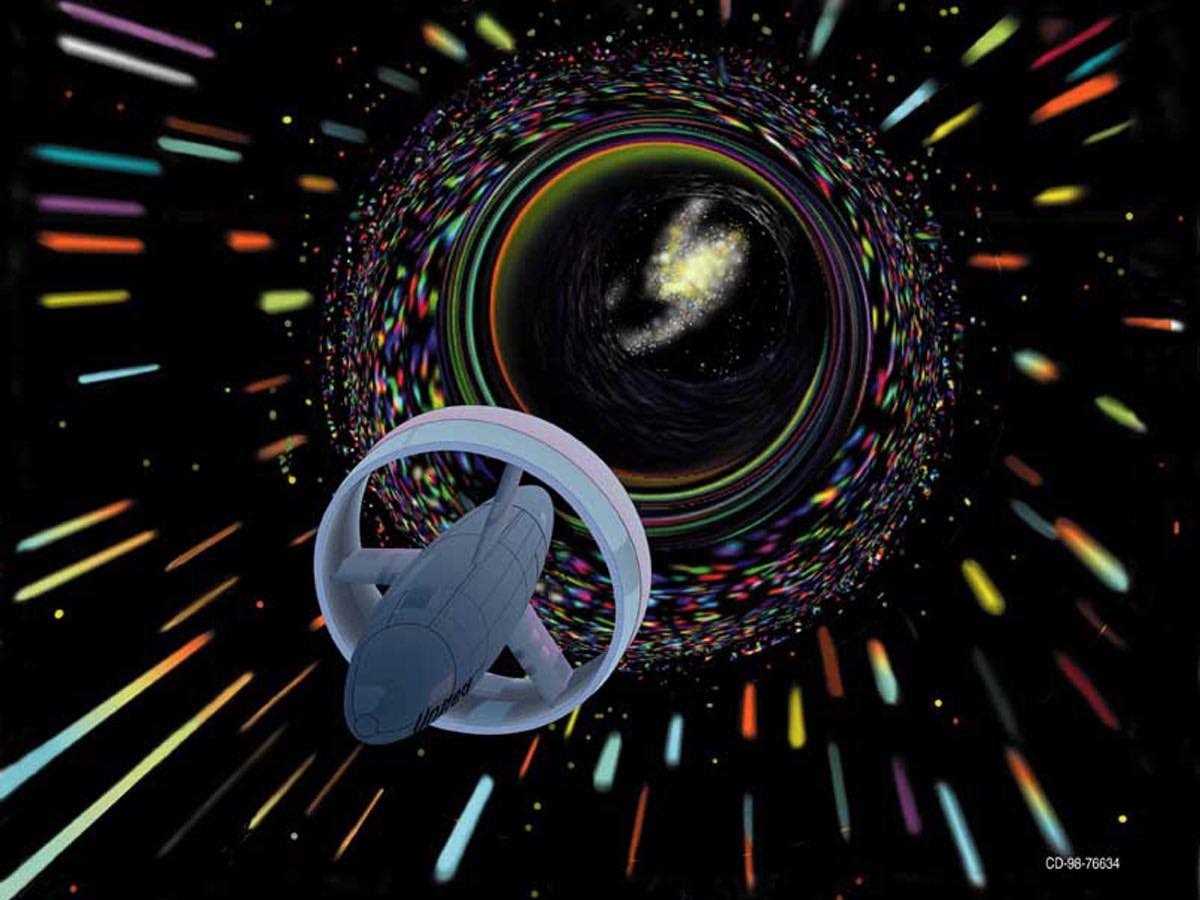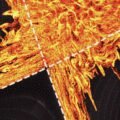In 1935, Albert Einstein and his postdoc Nathan Rosen discovered a hypothetical mathematical spacetime structure that bridges two separate regions of space, potentially allowing a shortcut between them. In theory, travel through this could allow much faster passage than travel in the familiar external spacetime that connects them. This is an example of a general class of spacetime structures with two mouths connected by a throat, more commonly known as a “wormhole.”
In 1962, Robert Fuller and John Wheeler demonstrated that the Einstein-Rosen wormhole was unstable and would pinch off before any particle could traverse it. Subsequently, a possible solution emerged when Stephen Hawking, Kip Thorne, and their collaborators later showed that exotic matter with a negative mass (energy) density could stabilize a wormhole and make it hypothetically traversable. Such a substance is known to exist: the “dark energy” whose repulsive gravity causes the accelerated expansion of the Universe.
However, to construct a wormhole, one would need to excavate dark energy from the cosmic reservoir and mold it into a wormhole. We do not know if that is possible since the nature of dark energy also remains unknown.
A traversable wormhole would allow an advanced civilization to travel back in time. This is because time progresses differently inside and outside the wormhole. As a result, synchronized clocks at either end of the wormhole remain synchronized for an observer passing through the wormhole. Imagine observers at one end of the wormhole that encountered time dilation and aged less by moving around or temporarily visiting a gravitational potential well. Such observers would be able to connect to the older end of the wormhole at the same time, thereby allowing the older version of themselves to meet their younger selves.
From the point of view of an outside observer, this constitutes what science fiction would recognize as a time machine.
In light of such time-bending possibilities, in 1992, Stephen Hawking proposed the “chronology protection conjecture,” arguing that the laws of physics prevent time travel, ensuring the Universe would remain safe for historians. We do not know whether Hawking’s conjecture is true since we do not have a predictive theory that unifies quantum mechanics and gravity. If it is, traversable wormholes cannot be constructed by us or by any advanced extraterrestrial civilizations.
This set of arguments suggests that if we ever discover alien visitors near Earth that took advantage of wormholes to travel faster than light, we would know that Hawking’s conjecture is wrong and that time travel is possible. Their scientific feat would have major implications for the theory we develop for quantum gravity. It will also raise ethical questions, such as whether we should request access to their time machine and go back in time to kill Adolf Hitler before the Holocaust. Such an act would allow me to bring to life 65 members of my father’s family who died in Nazi concentration camps.
Access to a time machine as a tool for correcting human history is one possible benefit of encountering alien quantum-gravity gadgets. Another would involve travel to distant locations in the cosmos within a human lifetime through a wormhole. Which one should we choose to use first? My personal priority would be to fix human history before embarking on interstellar trips. This is because we know what needs to be fixed in our past, but we do not know which interstellar destination is worthwhile.
Encountering the technological products of advanced extraterrestrial scientists could be very helpful to our own scientific progress. We discovered quantum mechanics and General Relativity only a century ago and have much to learn.
Avi Loeb is the head of the Galileo Project, founding director of Harvard University’s – Black Hole Initiative, director of the Institute for Theory and Computation at the Harvard-Smithsonian Center for Astrophysics, and the former chair of the astronomy department at Harvard University (2011-2020). He is a former member of the President’s Council of Advisors on Science and Technology and a former chair of the Board on Physics and Astronomy of the National Academies. He is the bestselling author of “Extraterrestrial: The First Sign of Intelligent Life Beyond Earth” and a co-author of the textbook “Life in the Cosmos”, both published in 2021. The paperback edition of his new book, titled “Interstellar”, was published in August 2024.

